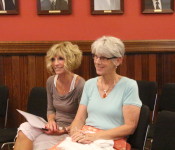One-hundred years ago today, one of the most miraculous, magical events in the history of modern warfare occurred along stretches of the Western Front during World War I; soldiers on both sides of the conflict put aside their weapons and spontaneously ventured out onto “no-man’s-land” in a gesture of goodwill and peace associated with Christmas.
Watch the 2014 English video advertisement on The Christmas Truce of 1914.
In an examples of the facts being as true as the story told, in many locations along the 450 miles of trenches stretching along the French and Belgian countrysides, German and British soldiers declared an unofficial Christmas armistice of the fighting that began just four months before.
The first inkling of began around midnight late Christmas Eve (the day most German’s celebrated the holiday) as German’s shouted out holiday greetings and could be heard singing Christmas songs and carols well known and loved by British including “Silent Night, Holy Night.” British soldiers began singing along through the night. British troops could also see the German’s decorating the wire with evergreen branches and candles.
According to countless accounts, letters and reports, on Christmas morning, Germans emerged from the shelter of the trenches to first wave, then cautiously cross onto the strip of land barely one hundred meters wide separating the two foes.
Writing to his mother, Capt. A. D. Chater of the 2nd Battalion Gordon Highlanders described “one of the most extraordinary sights anyone has ever seen.”
Many historians believe the truce took place as many of the combatants in the first few months of the war were professional soldiers rather than conscripts which came after the wholesale slaughter to tens of thousands in single day battles that would begin in the spring of 1915.
Both sides in the trenches saw the men across “No-Man’s Land” almost as respected, brave colleagues in the prosecution of battles.
And for one glorious day, the common humanity within all men triumphed over the call of war.


